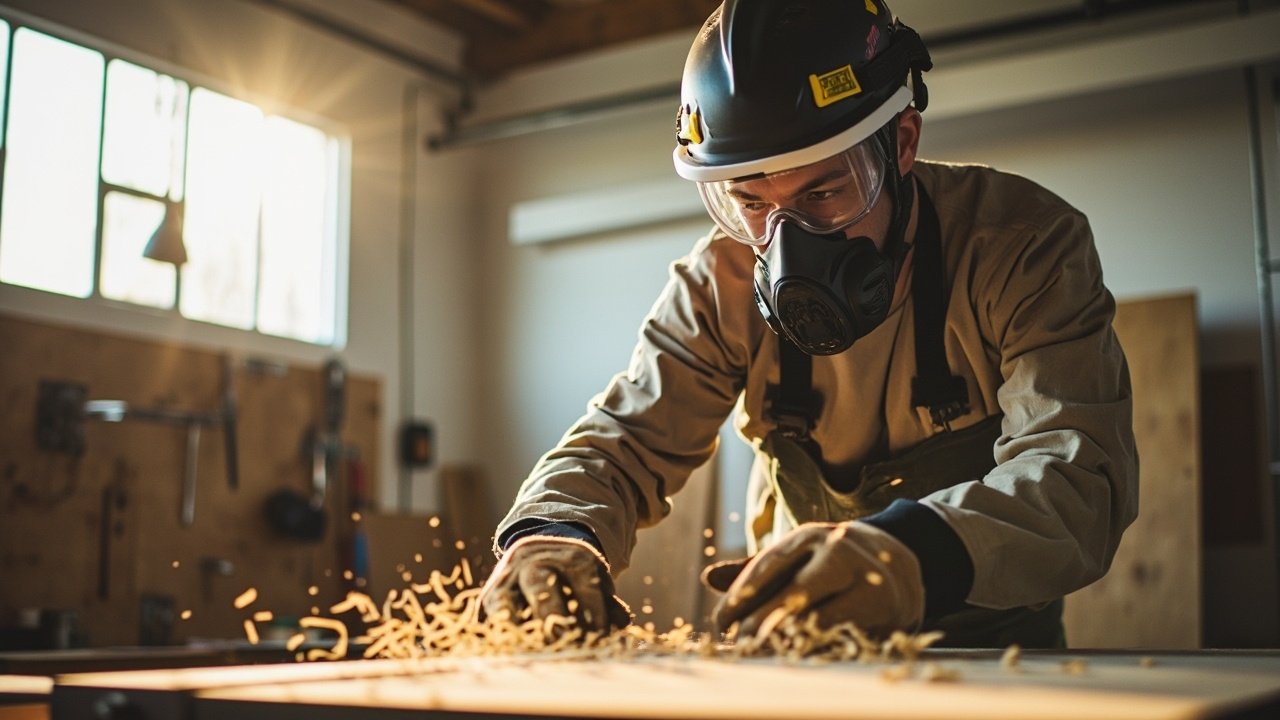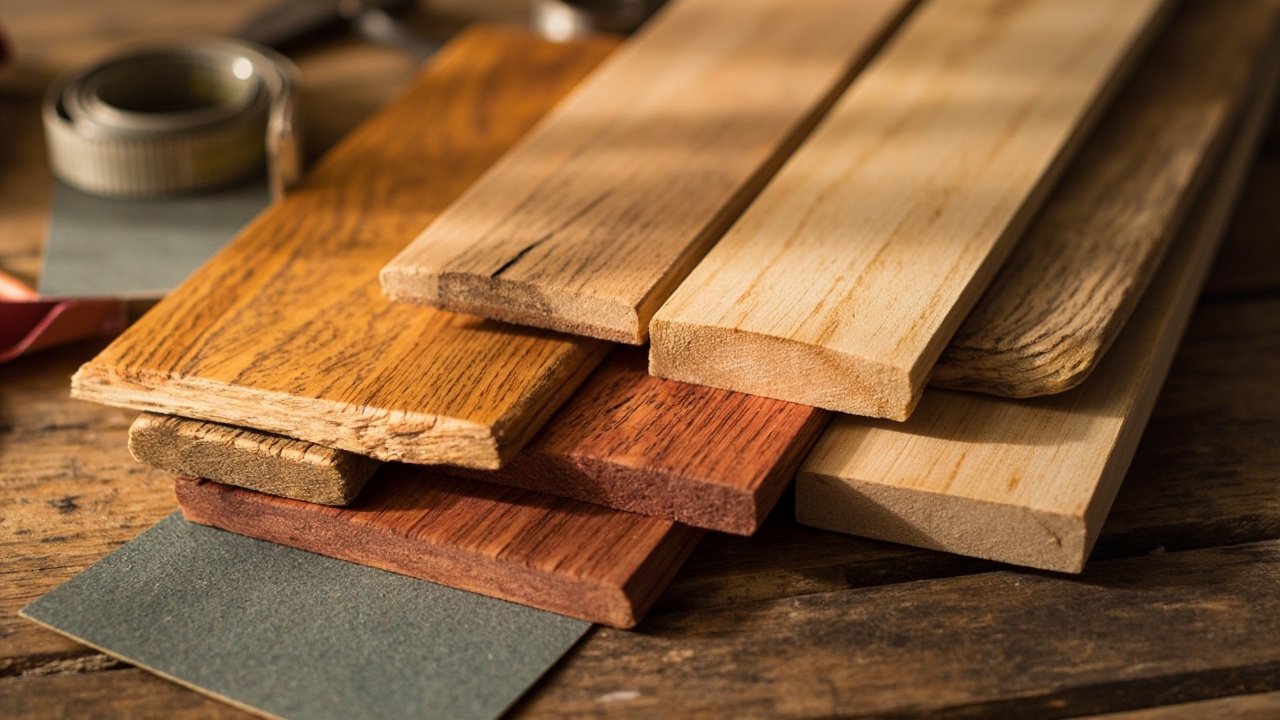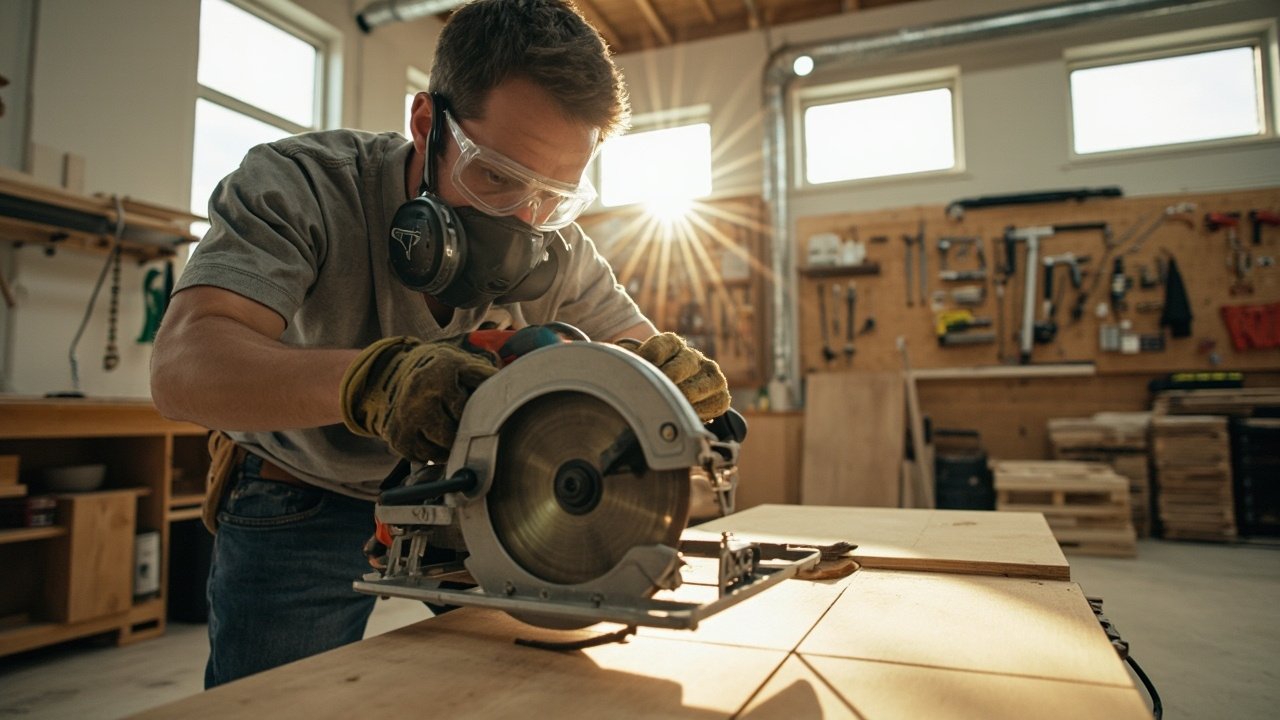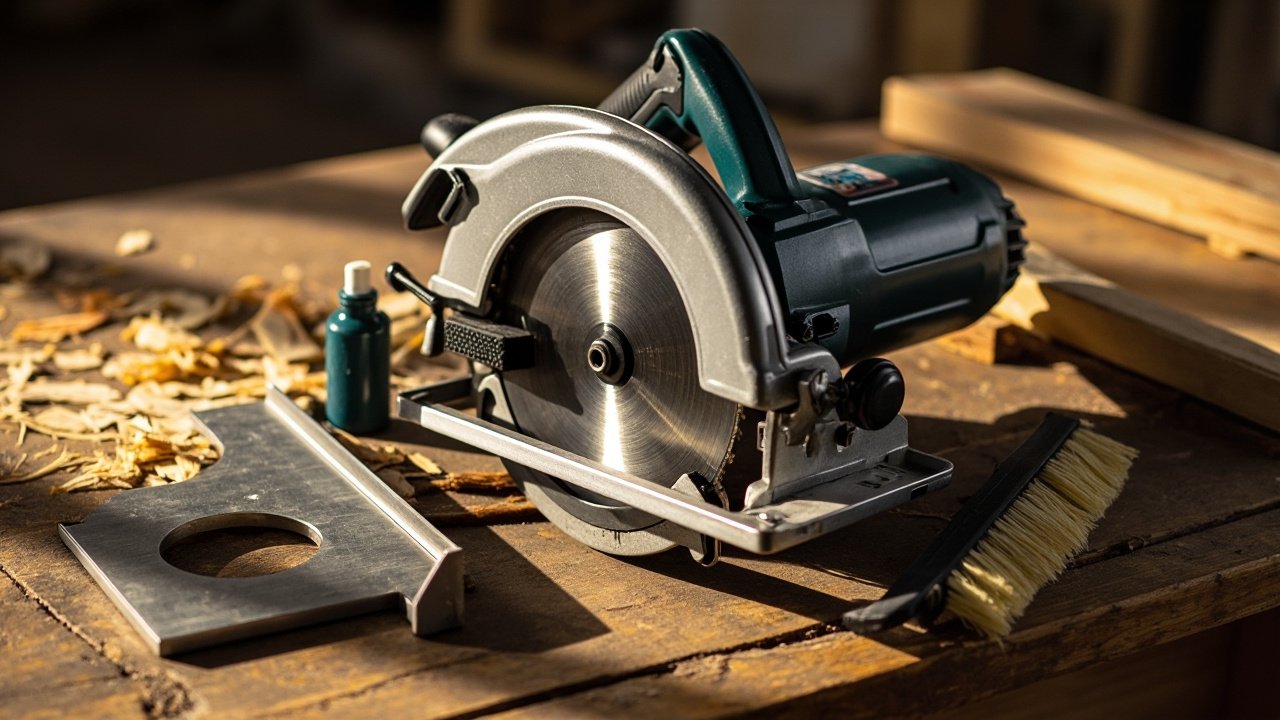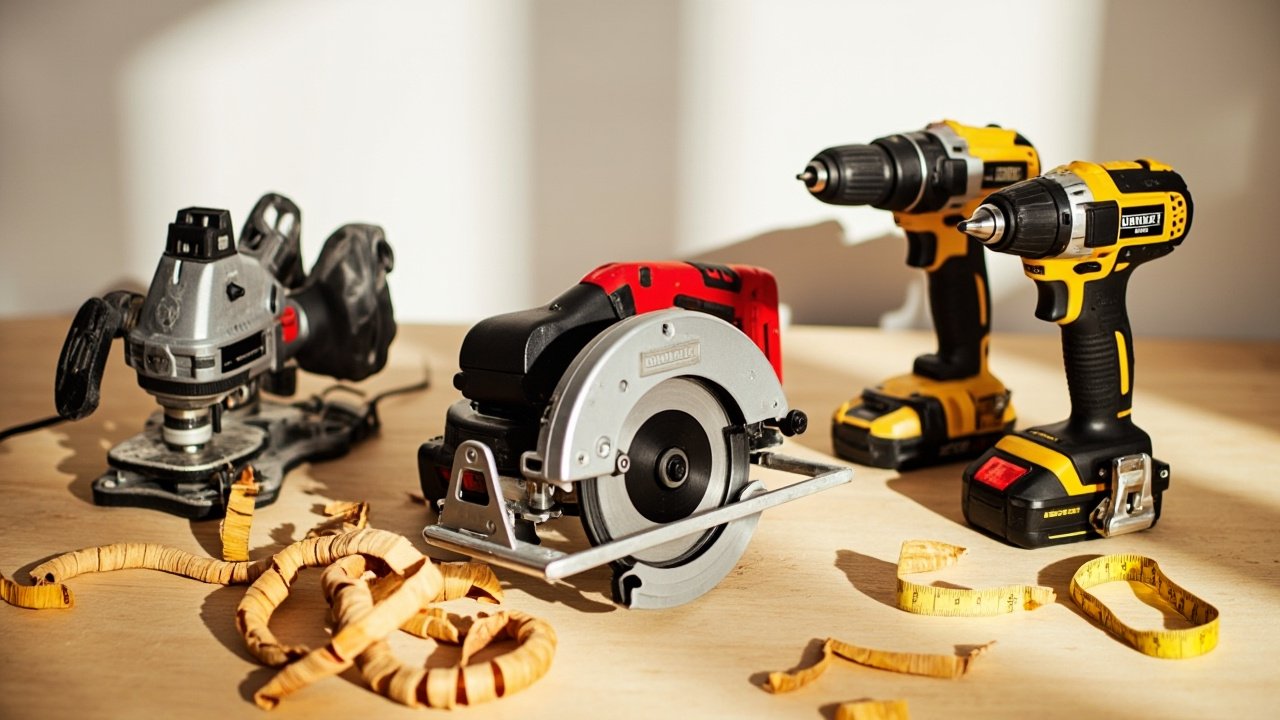Woodworking is one of the most rewarding hobbies out there. There’s something magical about turning a piece of raw wood into a beautiful, functional item. But let’s be honest working with woodworking tools can be intimidating, especially if you’re just starting out. I remember the first time I picked up a circular saw; my hands were shaking, and I was terrified of making a mistake.
That’s why understanding the safety rules for woodworking tools is so important. It’s not just about avoiding accidents it’s about feeling confident and in control. Whether you’re in a humid Florida garage or a chilly Midwest basement, these rules will help you stay safe and enjoy your craft.
Table of Contents
Table of Contents
Woodworking tools, from hand saws to power drills, are incredibly useful but can also be dangerous if not used properly. According to the U.S. Consumer Product Safety Commission, thousands of woodworking-related injuries occur each year, many of which could have been prevented with proper safety measures. By following these guidelines, you can minimize risks and focus on what you love most creating.
What Are the Basic Safety Rules for Woodworking Tools?
Before we dive into the specifics, let’s talk about the golden rule: Always prioritize safety over speed. Rushing through a project can lead to mistakes, and in woodworking, mistakes can be dangerous. Here are the essential safety rules to follow:
1. Wear the Right Protective Gear
No matter how small the project, always protect yourself. Here’s what you’ll need:
- Safety glasses: Sawdust and wood chips can fly everywhere. Protect your eyes! Look for glasses with side shields for extra protection.
- Hearing protection: Tools like table saws and routers can be loud. Earplugs or earmuffs are a must. Prolonged exposure to noise above 85 decibels can cause hearing loss.
- Gloves: But only when handling wood, not when operating tools. Gloves can get caught in machinery, leading to serious injuries.
- Dust mask or respirator: Especially important if you’re sanding or cutting treated wood. Inhaling sawdust can cause respiratory issues over time.
Pro Tip: If you’re in a humid state like Louisiana, consider a respirator with a moisture filter to make breathing easier. Brands like 3M offer affordable and effective options.
2. Keep Your Workspace Clean and Organized
A cluttered workspace is an accident waiting to happen. Here’s how to stay organized:
- Sweep up sawdust regularly to prevent slips. Sawdust can also be a fire hazard, especially near electrical equipment.
- Store tools properly when not in use. Use pegboards or tool chests to keep everything in its place.
- Keep cords out of the way to avoid tripping. Use cord organizers or tape them down if necessary.
Regional Note: If you’re in Arizona, where dust is a constant battle, consider investing in a shop vacuum to keep your workspace clean. Brands like Shop-Vac are widely available at Home Depot and Lowe’s.
3. Inspect Your Tools Before Use
Always check your tools before starting a project. Look for:
- Loose blades or bits. Tighten them securely to avoid accidents.
- Frayed cords. Replace damaged cords immediately to prevent electrical shocks.
- Dull blades (sharp tools are safer because they require less force). Regularly sharpen or replace blades to maintain efficiency and safety.
Pro Tip: If you’re in a state with harsh winters, like Minnesota, store your tools in a climate-controlled area to prevent rust and damage. Consider using a dehumidifier in your workshop.
4. Use Tools as Intended
It might sound obvious, but using tools incorrectly is a common cause of accidents. For example:
- Don’t use a screwdriver as a chisel. This can damage the tool and cause injuries.
- Never remove safety guards from power tools. These guards are designed to protect you from moving parts.
- Always follow the manufacturer’s instructions. Each tool has specific guidelines for safe operation.
Regional Note: If you’re in Texas, where water hardness can affect tools, clean and maintain them regularly to prevent corrosion. Use products like WD-40 to keep moving parts lubricated.
5. Focus on What You’re Doing
Distractions are dangerous in the workshop. Here’s how to stay focused:
- Turn off your phone or put it on silent. Notifications can break your concentration.
- Don’t rush take your time with each step. Rushing increases the likelihood of mistakes.
- If you’re tired or frustrated, take a break. Fatigue can impair your judgment and coordination.
Pro Tip: If you’re in a busy household, consider setting up a “do not disturb” sign for your workshop door. This will help minimize interruptions.
Read also: What’s the difference between manual and electric saws?
6. Know Your Limits
It’s okay to admit when a project is beyond your skill level. Start with simple projects and gradually work your way up. If you’re unsure about something, ask for help or watch a tutorial.
Regional Note: If you’re in Pennsylvania, consider joining a local woodworking group or visiting an Amish woodworker for inspiration and advice. The Amish are known for their craftsmanship and can offer valuable insights.
Regional Tips for Woodworking Safety in the U.S.
Woodworking safety isn’t one-size-fits-all. Different regions come with unique challenges. Here’s how to adapt:
- Humid States (e.g., Florida, Louisiana): Use moisture-resistant finishes like Minwax Helmsman Spar Urethane to protect your projects from warping. Store wood in a dry area and use a dehumidifier in your workshop.
- Dry States (e.g., Arizona, Nevada): Keep your wood hydrated to prevent cracking. Store it in a cool, shaded area and use a humidifier if necessary.
- Cold States (e.g., Minnesota, Wisconsin): Use space heaters to keep your workshop warm, but keep them away from sawdust and flammable materials. Insulate your workshop to maintain a consistent temperature.
- Pest-Prone Areas (e.g., Southern States): Treat your wood with borate-based products to prevent termite damage. Regularly inspect your workshop for signs of pests.
FAQs About Woodworking Safety
Q1: What are the most important safety rules for using power tools?
A: The top safety rules for power tools include:
- Always wear safety glasses, hearing protection, and a dust mask (especially when sanding or cutting treated wood).
- Inspect tools before use – check for frayed cords, loose blades, or damaged parts.
- Keep your workspace clean – sawdust buildup can be a fire hazard and cause slips.
- Never remove safety guards – they’re designed to protect you from moving parts.
- Use clamps or a vise to secure your workpiece instead of holding it by hand.
- Unplug tools when changing blades or bits to prevent accidental startups.
Regional Tip: If you’re in a humid state like Florida, wipe down metal tools after use to prevent rust.
Q2: Can I wear gloves while using a table saw or drill press?
A: No! Gloves can get caught in spinning blades or drill bits, pulling your hand into the tool. Exception: Wear gloves when handling rough lumber (to avoid splinters), but remove them before operating power tools.
Pro Tip: If you need a better grip, use anti-slip tape on tool handles instead.
Q3: How do I protect my lungs from sawdust?
A: Sawdust can cause long-term respiratory issues. Here’s how to stay safe:
- Wear an N95 dust mask for sanding or cutting.
- Use a shop vacuum with a HEPA filter to capture fine particles.
- Work outdoors or in a ventilated area when possible.
- Avoid pressure-treated wood dust (it contains harmful chemicals).
Regional Note: In dry states like Arizona, sawdust spreads easily consider a dust collection system for your workshop.
Q4: What should I do if a power tool kicks back?
A: Kickback (when a tool jerks violently) is common with table saws and routers. To prevent it:
- Use a riving knife on table saws to prevent wood from pinching the blade.
- Stand to the side (not directly behind the blade).
- Push wood through smoothly don’t force it.
If kickback happens:
- Let go of the tool immediately (don’t try to fight it).
- Turn off the power and wait for the blade to stop.
Q5: Are cordless tools safer than corded ones?
A: Both have risks, but cordless tools reduce:
- Tripping hazards from cords.
- Electrical shocks in damp workshops (common in Pacific Northwest garages).
However, cordless tools can overheat if overused let them cool between heavy tasks.
Q6: How often should I replace safety gear?
A:
- Safety glasses: Replace if scratched or damaged (cloudy lenses reduce visibility).
- Dust masks: Discard after 8–10 hours of use (or when breathing becomes difficult).
- Ear protection: Replace earmuff cushions every 6 months if used frequently.
Pro Tip: Label gear with purchase dates to track replacements.
Q7: What’s the safest way to store sharp tools?
A:
- Use blade guards on chisels and handsaws.
- Hang tools on a pegboard (keeps them visible and prevents accidents).
- Store sharp items in a locked cabinet if kids or pets are around.
Regional Note: In Texas, where humidity causes rust, coat metal tools with WD-40 before storing.
Q8: Why does my circular saw keep binding? How do I fix it safely?
A: Binding happens when the blade gets stuck in the wood. Causes and fixes:
- Dull blade: Sharpen or replace it.
- Cutting too fast: Slow down and let the blade do the work.
- Wet or warped wood: Avoid cutting damp lumber (common in Louisiana).
Safety Tip: If the saw binds, release the trigger, wait for the blade to stop, then gently back it out.
Q9: Is it safe to wear loose clothing or jewelry while woodworking?
A: No! Loose sleeves, necklaces, or even long hair can get caught in tools.
- Wear fitted clothing and roll up sleeves.
- Remove rings and bracelets.
- Tie back long hair with a bandana or cap.
Q10: How do I childproof my workshop?
A: If kids are around:
- Lock power tools in a cabinet or use safety plugs on outlets.
- Store sharp hand tools out of reach.
- Teach older kids basic safety rules (e.g., “never touch tools without an adult”).
Pro Tip: In family-friendly states like Utah, consider setting up a “kids’ corner” with safe, wooden toy projects.
Final FAQ Tip: Trust Your Instincts!
If a cut or tool setup feels unsafe, stop and reassess. Most accidents happen when woodworkers ignore their gut feelings.
Did we miss your burning safety question? Ask in the comments we’ll help you solve it!
Key Takeaways: Safety Rules for Woodworking Tools
- Always wear protective gear.
- Keep your workspace clean and organized.
- Inspect tools before use.
- Use tools as intended.
- Stay focused and know your limits.
- Adapt to regional challenges.
Final Thoughts
Woodworking is a wonderful way to express creativity and build something tangible. But like any craft, it comes with risks. By following these safety rules for woodworking tools, you can protect yourself and others while enjoying your hobby to the fullest.
If you’re in the U.S., don’t forget to adapt these tips to your region’s unique challenges. And if you’re ever in doubt, reach out to local experts or woodworking communities for advice.
Now, grab your safety gear, head to your workshop, and create something amazing safely!


